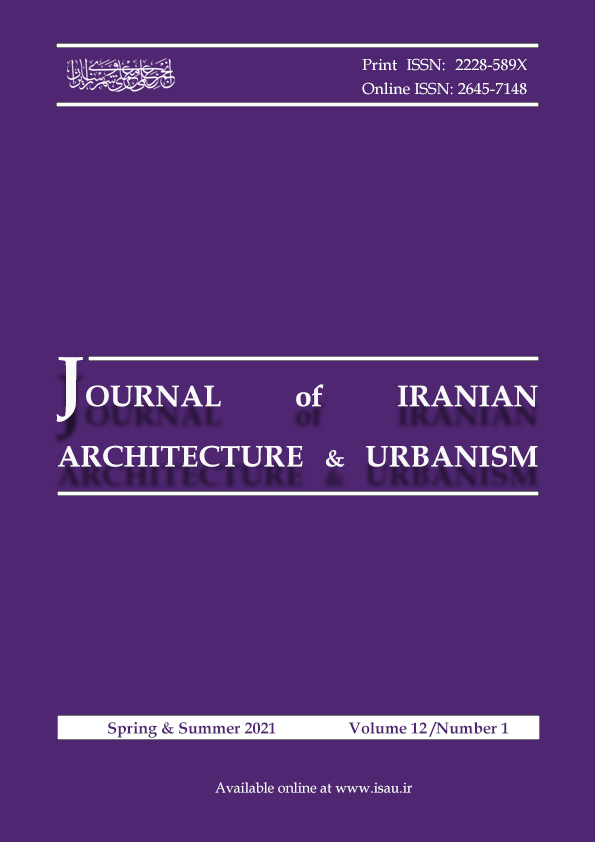Document Type : Original Research Paper
Authors
1 Ph.D. Candidate in Architecture, Department of Architecture, Hamadan Branch, Islamic Azad University, Hamadan, Iran.
2 Assistant Professor, Department of Architecture, Qasr e Shirin Branch, Islamic Azad University, Qasr e Shirin, Iran.
3 Assistant Professor, Department of Architecture, Hamadan Branch, Islamic Azad University, Hamadan, Iran.
Abstract
Extended Abstract
Background and Objectives: The main purpose of this study is to evaluate and determine the criteria and indicators affecting the creation of sensory qualities in human-centered urban spaces and the reproduction of these factors in contemporary urban spaces. This study is conducted in “Taq-e Bostan” pedestrian way, located in the historical fabric of Kermanshah, as a case study. This sidewalk has been one of the most important pedestrian ways of the city and manifests Kermanshah identity. This pedestrian way has unique environmental features such as straightness, with no slopes, and a view to the mountainous heights of Taq-e Bostan. It benefits from good thermal comfort conditions due to the existence of the vegetations. In addition, the historical monuments of Taq-e Bostan have given identity to this pedestrian way. Since machine life has caused anonymity and reduced the sensory qualities in urban spaces, this urban space is abandoned and empty of people. Therefore, the present study pursues the main purpose of the research and specifically seeks to recognize the impact of physical and activity factors on creating sensory qualities in this pedestrian way and the promotion of this urban space. Also, this research is based on the research aim and context and tries to understand and analyze the relationship between physical and functional factors and develop and enhance the sensory qualities in such environments.
Methods: The present study is an applied research, and it is considered a descriptive survey research in terms of research method. Therefore, the theoretical foundations have been explained by referring to documentary and bibliographic studies in a descriptive method. The research objectives have been achieved based on survey studies and survey methods. In order to conduct the research in line with the research goals, the indicators related to the environmental quality of urban public spaces were extracted by reviewing the theories of researchers. Regarding the early hypothesis that considered some features of Taq-e Bostan pedestrian way compatible with the extracted indicators, the case study was chosen to evaluate the research hypothesis. In the next step, a questionnaire was provided to evaluate the extracted indicators. Each indicator was asked in the questionnaire and assessed through the five-point Likert scale. For validating the questions based on the sampling volume by Morgan table method and based on observing the number of users in one hour of a day in a particular part of space, a number of 220 questionnaires were completed to be analyzed in SPSS software. The statistical community was comprised of random age and gender groups of the space users. Finally, the relevant data was analyzed, and the main factors and the sample scores in each of the physical and activity criteria were achieved by inferential statistics analysis in SPSS software.
Findings: In this research, the independent variables of the research that can create and improve sensory qualities in Taq-e Bostan pedestrian way in Kermanshah were determined to achieve the research objectives. These variables are as follows: activity criteria (environmental vitality and mobility), physical criteria (environmental desirability and suitability, structure, environmental facilities. The findings of this study indicate that there is a direct and significant relationship between all independent research variables (activity criteria, physical criteria (structure, desirability and environmental suitability, and environmental facilities). The highest correlation was seen between activity criteria (environmental vitality and mobility). The sensory qualities of space in Taq-e Bostan pedestrian way in Kermanshah is mostly affected by the activity criteria. In the second stage, the correlation of physical criteria (environmental facilities and facilities) indicates a close relationship between independent variables and dependent variables. The lowest level of correlation is observed in the other criteria (desirability and environmental friendliness). In order to measure the collective effect of independent variables on the dependent variable, a multiple regression was used. The results indicate that independent variables simultaneously affect the development of sensory qualities. The multiple correlation coefficient of R = 0.798 and the coefficient of determination of R2 = 0.746 show that 74.6% of the changes of the dependent variable are interpreted by the independent variables.
Conclusion: In this study, the independent variables that develop and promote the sensory qualities in Kermanshah Taq-e Bostan pedestrian way (the dependent variable) were analyzed. Based on the results obtained from the analysis by SPSS software, a direct and significant relationship was recognized between all the criteria of the physical and functional variables and the development and improvement of sensory qualities in Taq-e Bostan pedestrian way. However, the obtained analytical results indicate the importance of activity criteria (environmental vitality and mobility) in achieving research objectives. It seems that sociable spaces with people’s presence and activity have a higher potential to become pedestrian-centered urban spaces. Therefore, planners and urban designers should consider this issue in defining space areas in the city. Finally, providing appropriate facilities for humans will lead to a higher presence of people and ultimately improve the sensory qualities in urban areas.
Graphical Abstract
Highlights
Keywords


